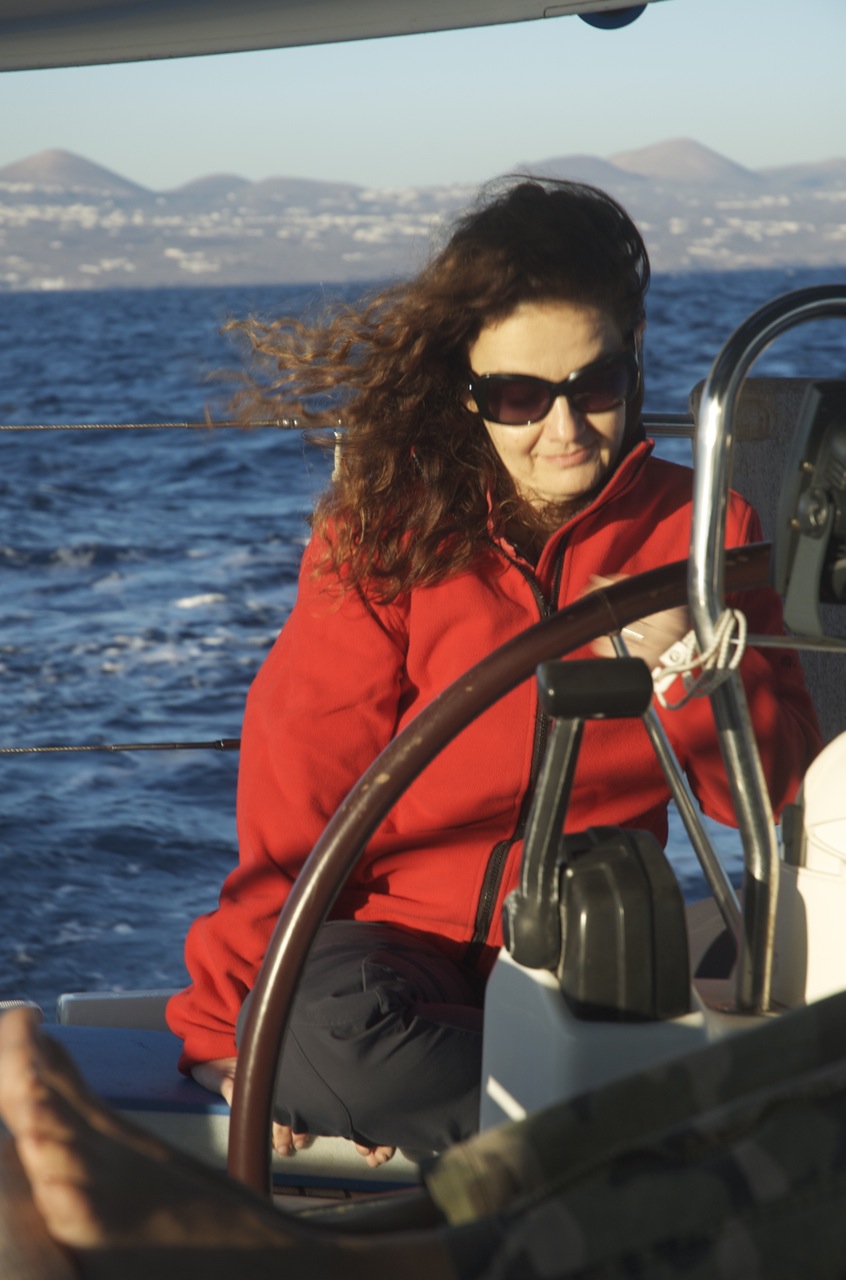(This entry is written by Tomaž in Antigua before departure)
We have put anti-fouling paint on Heron back in May, while she was on the hard in Koper.
This is ablative paint (self dissolving) and is approved in Europe. It is supposed to be environmentally more friendly then the old, toxic paints.
What this really mean is that the paint is not very good at doing it's job - keeping living things from attaching to the hull. The paint might be OK for short sailing period in Adriatic, but it is no match for fast growth of warm seas of Mediterranean, South of Portugal Canaries, Atlantic crossing and Caribbean sea.
So, Heron was very dirty. Long green grass, algae, slime, mussels, .... we were carrying a living reef with us.
The boat did not want to sail fast, could not beat high upwind and was slow on motor. At beating we had to tack 120 deg instead of usual 90.
I first wanted to clean her myself, but in fact I have never even seen how this is done, so we bite the bullet and we hired professionals to clean it. The price is higher here in Antigua then it is in US for example.
So, divers did their job and - wow. Heron sails like a dream again.
One day we needed jib + motor at 2200 rpm hardly making 5 knots, next day we were easy doing 6,5 knots under jib alone (without main).
Under motor alone she is now faster at 1600 rpm then she was before at 2200 rpm.
I could not believe that the difference is that big.
On the negative side: The divers took off almost all of the anti fouling paint - so I will have to clean Heron very often until we haul her out and apply new anti-fouling.
And the latest news: Joži, our friend is here with us.
We are leaving Antigua heading NW to St. Barth. We already cleared out. We will do a night passage and plan a daytime landfall. Approaching a port during night is dangerous here as there are almost no lighthouses or some may not work. We do have very precise electronic charts, but they are based on hundred year old data, so are not accurate enough to take a chance arriving at night.
P.S. As I have a very slow connection there are no pictures today.
We have put anti-fouling paint on Heron back in May, while she was on the hard in Koper.
This is ablative paint (self dissolving) and is approved in Europe. It is supposed to be environmentally more friendly then the old, toxic paints.
What this really mean is that the paint is not very good at doing it's job - keeping living things from attaching to the hull. The paint might be OK for short sailing period in Adriatic, but it is no match for fast growth of warm seas of Mediterranean, South of Portugal Canaries, Atlantic crossing and Caribbean sea.
So, Heron was very dirty. Long green grass, algae, slime, mussels, .... we were carrying a living reef with us.
The boat did not want to sail fast, could not beat high upwind and was slow on motor. At beating we had to tack 120 deg instead of usual 90.
I first wanted to clean her myself, but in fact I have never even seen how this is done, so we bite the bullet and we hired professionals to clean it. The price is higher here in Antigua then it is in US for example.
So, divers did their job and - wow. Heron sails like a dream again.
One day we needed jib + motor at 2200 rpm hardly making 5 knots, next day we were easy doing 6,5 knots under jib alone (without main).
Under motor alone she is now faster at 1600 rpm then she was before at 2200 rpm.
I could not believe that the difference is that big.
On the negative side: The divers took off almost all of the anti fouling paint - so I will have to clean Heron very often until we haul her out and apply new anti-fouling.
And the latest news: Joži, our friend is here with us.
We are leaving Antigua heading NW to St. Barth. We already cleared out. We will do a night passage and plan a daytime landfall. Approaching a port during night is dangerous here as there are almost no lighthouses or some may not work. We do have very precise electronic charts, but they are based on hundred year old data, so are not accurate enough to take a chance arriving at night.
P.S. As I have a very slow connection there are no pictures today.


























